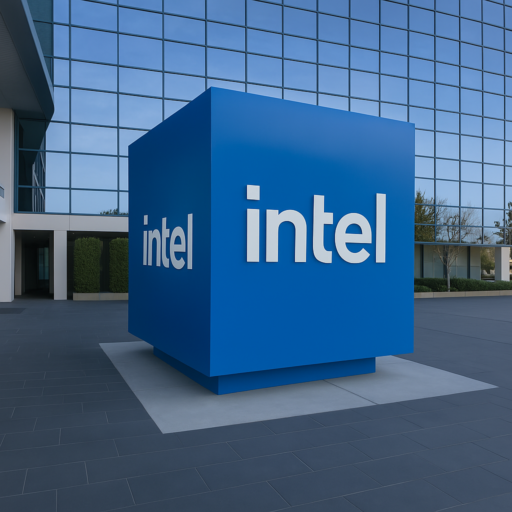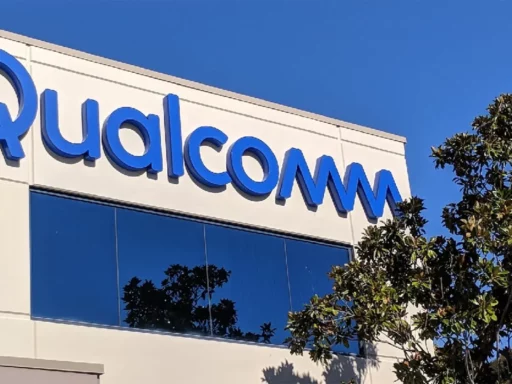Intel Corporation, one of the world’s largest semiconductor manufacturers, has long been a cornerstone of the global technology industry. Known for its central processing units (CPUs), chipsets, and data center solutions, Intel powers billions of devices—from personal computers and cloud platforms to autonomous systems and AI infrastructure. Alongside its leadership in innovation, Intel has become a recognized force in corporate sustainability, integrating environmental, social, and governance (ESG) principles into its global operations.
Intel’s sustainability journey dates back over two decades and has grown in ambition, with strong commitments to net-zero emissions, water restoration, zero waste, and sustainable manufacturing. As of 2024, Intel is pursuing climate action through investments in renewable energy, green manufacturing technologies, and supplier decarbonization programs, while also enabling customers to reduce their own environmental impacts through energy-efficient processors and platforms.
- Intel has committed to achieving net-zero greenhouse gas emissions in global operations (Scope 1 and 2) by 2040.
- In 2022, Intel used 93% renewable electricity across its global operations, including 100% in the U.S., Europe, and Israel.
- Intel restored more than 2 billion gallons of water to local communities in 2022, as part of its net positive water goal.
Source: https://www.intel.com/content/www/us/en/corporate-responsibility/sustainability.html
Sustainability Strategy and Goals
Intel’s sustainability strategy is anchored by a commitment to be a net-zero emissions company by 2040, targeting Scope 1 and 2 emissions, while reducing Scope 3 (value chain) emissions through supplier engagement and product innovation. The strategy spans environmental conservation, climate resilience, energy efficiency, water stewardship, waste reduction, and responsible sourcing.
One of Intel’s flagship initiatives is its RISE Strategy 2030, which integrates sustainability into the company’s core business and innovation goals. Under this plan, Intel aims to deliver 10x more energy-efficient products by 2030, eliminate landfill-bound waste from all factories, and significantly reduce its overall carbon footprint.
Intel is also investing over $300 million in sustainability R&D and infrastructure, including water recycling, green chemistry, and energy optimization technologies across its semiconductor fabs. The company is working with governments and industry partners to accelerate the development of green semiconductor manufacturing, especially as it builds new fabs in the U.S. and Europe.
- Intel aims to achieve 100% renewable electricity use globally by 2030, with 93% already achieved as of 2022.
- The company plans to reduce Scope 3 emissions by engaging 90% of its suppliers to set science-based emissions reduction targets by 2025.
- Intel is committed to becoming net positive on water and zero waste to landfill across all manufacturing sites by 2030.
Source: https://www.intel.com/content/www/us/en/corporate-responsibility/2030-goals.html
Key Sustainability Innovations and Technologies
Intel is embedding sustainability into the architecture of its technologies and operations. Its processors and chips are increasingly optimized for energy efficiency, with each new generation designed to deliver more performance per watt. The company’s Xeon and Core processors, used in everything from PCs to hyperscale data centers, now support advanced power management features that significantly reduce energy consumption under various workloads.
In manufacturing, Intel is driving innovation through green chemistry, ultra-pure water recycling, and low-carbon process engineering. These initiatives reduce the environmental intensity of semiconductor fabrication—a sector traditionally associated with high energy and resource usage.
Intel also develops technologies that enable sustainability for its customers. Its chips power smart grids, energy-efficient data centers, electric vehicle systems, and environmental monitoring platforms. Additionally, Intel’s AI platforms support climate modeling, forest monitoring, and agricultural optimization to help organizations across sectors decarbonize and adapt to climate change.
- Intel’s latest data center chips offer up to 50% better performance per watt compared to previous generations.
- The company reuses or recycles over 90% of chemical and solid waste in its global operations.
- Intel’s investments in green chemistry have reduced high global warming potential (GWP) gas usage by over 10% year-over-year.
Source: https://www.intel.com/content/www/us/en/corporate-responsibility/environmental-sustainability.html
Measurable Impacts
Intel has delivered substantial environmental impact reductions across its global operations. In 2022, the company used 13.5 billion kWh of renewable electricity, equivalent to removing over 1.5 million cars’ worth of emissions from the road. It achieved net positive water in the U.S., India, and Costa Rica by returning more water to local watersheds than it consumes.
Intel has also reduced the greenhouse gas intensity per unit of product by 39% since 2010. Its fabs have achieved zero hazardous waste to landfill, and over 65% of total waste is recycled or reused. Intel’s sustainable packaging redesigns have helped cut over 800 metric tons of material waste annually, while improving logistics efficiency.
In product sustainability, Intel’s high-efficiency chips are helping hyperscale cloud providers and enterprise customers reduce the energy use of their data centers—one of the largest and fastest-growing sources of IT-related emissions.
- Intel achieved net positive water use in the U.S., India, and Costa Rica by restoring more water than it consumes.
- Greenhouse gas intensity decreased by 39% since 2010, despite increased chip complexity and output.
- Intel has recycled or reused over 90% of its manufacturing waste annually across global operations.
Source: https://www.intel.com/content/www/us/en/corporate-responsibility/environmental-sustainability.html
Challenges and Areas for Improvement
Intel operates in an energy- and resource-intensive industry, and while its sustainability efforts are advanced, several challenges remain. The first is Scope 3 emissions, particularly from the upstream manufacturing of raw materials and the downstream use of its chips in power-hungry systems. Managing and influencing these emissions across such a vast supply chain is complex.
The company also faces challenges in maintaining sustainability performance as it ramps up fab construction and chip production in new geographies, including Arizona, Ohio, and Germany. These massive capital projects require careful integration of renewable energy, water efficiency, and waste management systems from day one.
Additionally, semiconductor manufacturing still depends on certain high-GWP process gases and rare earth minerals. Developing cleaner alternatives and more circular material supply chains will be critical to meeting Intel’s long-term goals.
- Scope 3 emissions account for over 70% of Intel’s total climate impact, requiring deep supplier collaboration.
- Building new fabs increases risks to water and energy efficiency unless mitigated through up-front investment.
- Intel still relies on several high-GWP gases in chip etching and needs long-term green alternatives.
Source: https://www.intel.com/content/www/us/en/corporate-responsibility/environmental-sustainability.html
Future Plans and Long-Term Goals
Intel’s long-term environmental plans are centered around achieving net-zero emissions by 2040, reaching 100% renewable electricity globally by 2030, and ensuring climate resilience across its global operations. To support these goals, Intel is building green infrastructure into its new manufacturing facilities, including on-site water recycling, solar installations, and energy-efficient cleanrooms.
The company is also investing in the development of low-GWP manufacturing processes, expanding supplier sustainability programs, and deploying AI and automation to improve operational efficiency. Intel plans to issue more granular climate risk disclosures under TCFD and enhance life cycle assessments (LCAs) for its top-selling products.
Another major pillar of Intel’s future strategy is ecosystem leadership—collaborating with governments, academia, and industry coalitions to drive broader decarbonization across the tech sector.
- Net-zero operational emissions (Scope 1 and 2) by 2040; 100% global renewable electricity by 2030.
- 90% of key suppliers to set science-based emissions targets by 2025.
- Deploy advanced energy monitoring and AI systems across new fabs to reduce energy and emissions intensity.
Source: https://www.intel.com/content/www/us/en/corporate-responsibility/environmental-sustainability.html
Comparisons to Industry Competitors
Intel is in close sustainability competition with other major tech and semiconductor firms like NVIDIA, AMD, and TSMC. Each company is addressing emissions, energy use, and supply chain impact, though their strategies vary in depth and scope.
NVIDIA: Focuses heavily on energy-efficient computing and AI-powered sustainability solutions. It has achieved 100% renewable energy in U.S. operations and targets net-zero emissions by 2040.
Source: https://www.nvidia.com/en-us/sustainability/
AMD: Emphasizes energy efficiency in its chips and aims for a 30x improvement in processor efficiency by 2025. AMD also uses 100% renewable electricity for U.S. operations.
Source: https://www.amd.com/en/corporate-responsibility/environmental-sustainability
TSMC: The world’s largest contract chipmaker has committed to 100% renewable electricity use by 2050 and is investing heavily in green fabs and water recycling technologies.
Source: https://esg.tsmc.com/
- NVIDIA’s data center GPUs cut energy use by up to 42% per workload.
- AMD achieved a 6.8x gain in energy efficiency for its EPYC processors between 2020 and 2023.
- TSMC used 20% recycled water in chip production in 2023 and is moving toward net-zero emissions by 2050.
Our Thoughts
Intel stands as a sustainability leader in the semiconductor space due to its early investments in green manufacturing, water conservation, and renewable energy. Its comprehensive ESG reporting, ambitious carbon targets, and focus on product-level efficiency set it apart in a traditionally resource-heavy industry.
However, as Intel scales production and expands geographically, the pressure to decarbonize its supply chain and reduce Scope 3 emissions will grow. The success of Intel’s future sustainability performance will hinge on supplier engagement, green fab integration, and continued leadership in climate-smart innovation.
Intel’s position as both a chipmaker and enabler of sustainable technologies across sectors gives it unique leverage in the transition to a low-carbon economy. With its scale, engineering capabilities, and public commitments, Intel is well-positioned to drive industry-wide transformation.
Source: https://www.intel.com/content/www/us/en/corporate-responsibility/sustainability.html






